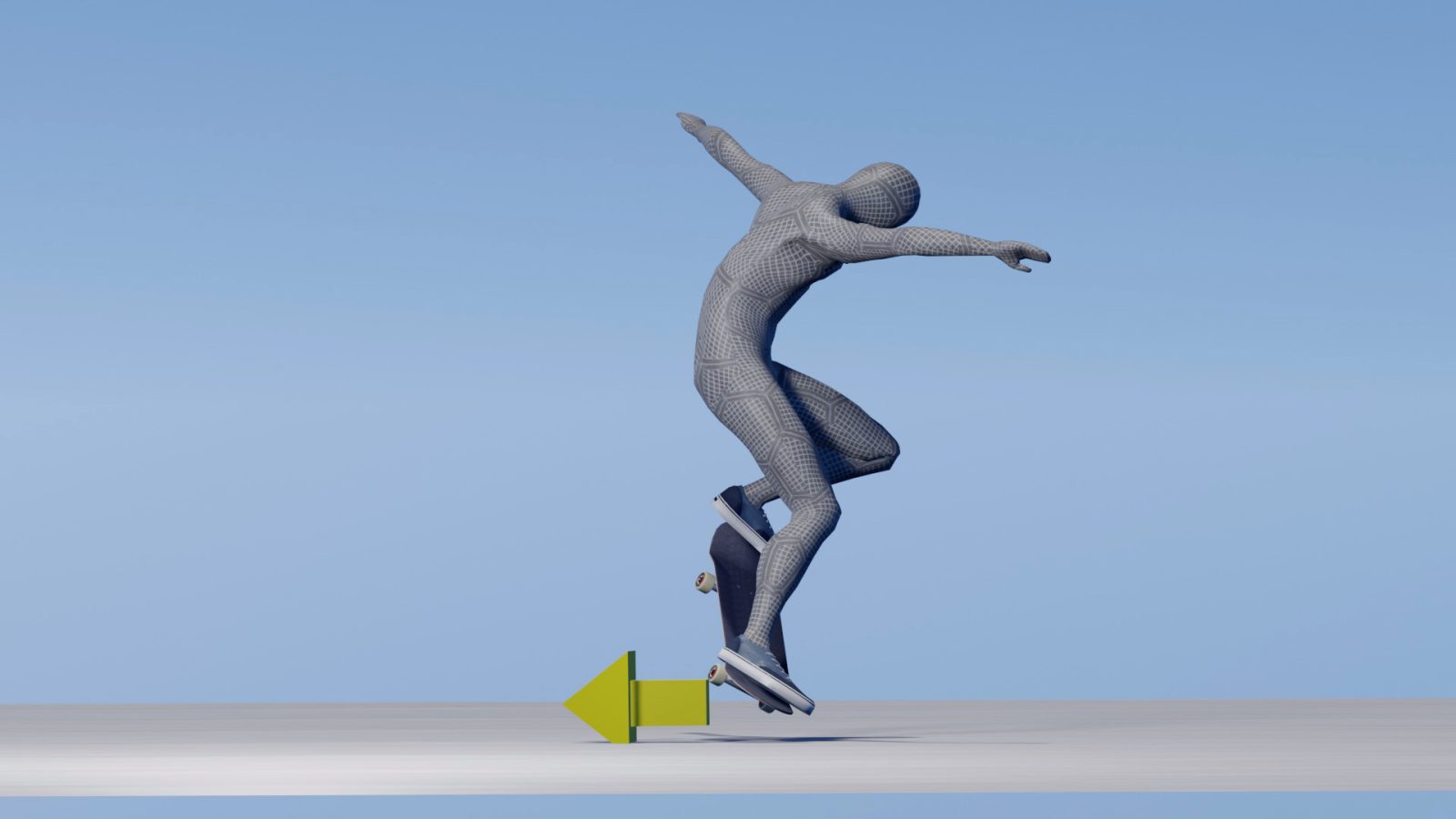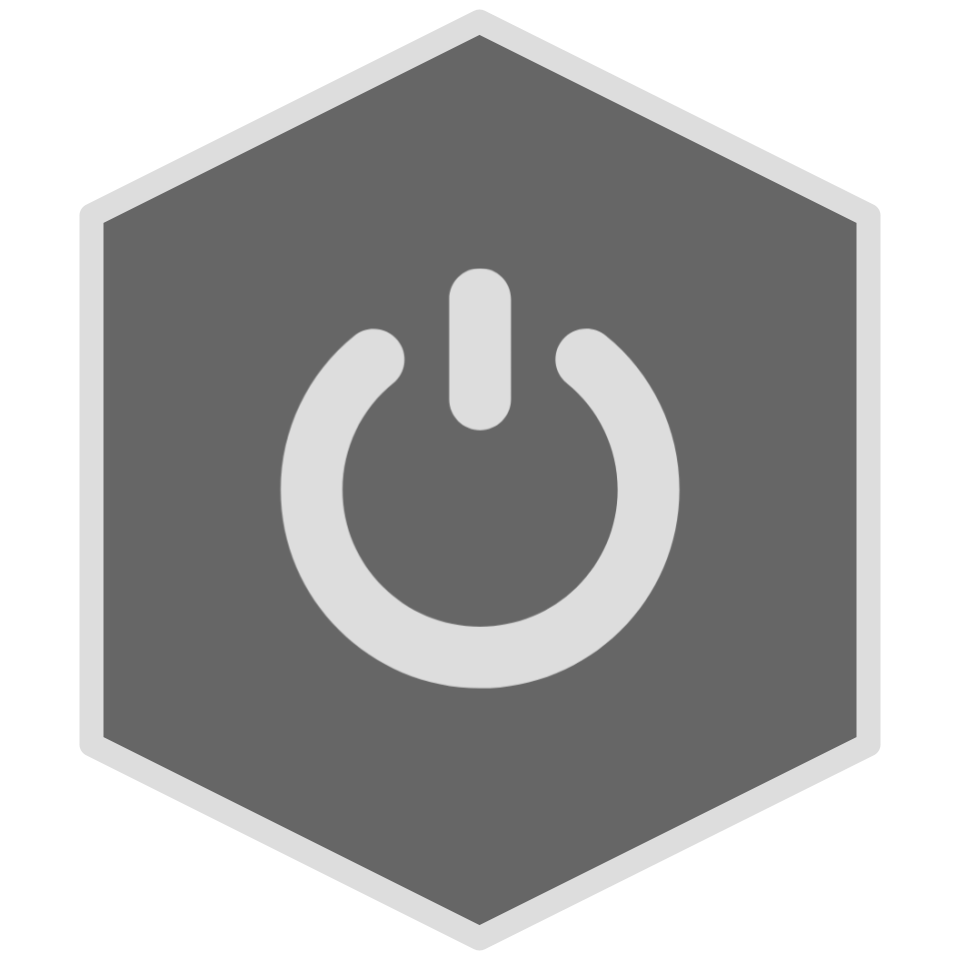Is it really because of your shoulders' rotation that your backside 180 is not spinning?
A backside 180 is actually composed of two elements: "the lower body's rotation that follows the upper body's preceding rotation" and "the lower body's rotation in reaction to the upper body rotating in the other direction." Combining them will help you land your backside 180s more easily.
Summary
Two types of dynamics that spin your board and body
Your legs may rotate by following an initial rotation of your upper body. In the air, you can boost the rotation by rotating your upper body in the other direction. This is because your body tries to conserve the total amount of energy in the air.
Extend your arms to increase your upper body's moment of inertia
The bigger the radius, the bigger the moment of inertia an object has, making it less likely to rotate. Although your upper and lower body receive the same amount of energy when you rotate your legs mid-air, since your upper body has a bigger moment of inertia, it is less affected by such energy.
Simulation
Hit the icon to initiate 3d simulation.
NOTE: We've found some parts of the model disappears when you get close to the model. Please give us some time to fix this issue.
Types of BS 180
There are 3+ types
Before breaking them down, let's sort out the types of BS180s as a prerequisite. Broadly speaking, BS 180s can be classified as follows:
- A type that you pop the board firmly and level it in the air.
- A type in which you scoop the tail with your back foot and spin your board.
- A type that you pivot on the nose.
This time, we will analyze the type you scoop, which is the easiest of the three and the best way to get used to the BS rotation.
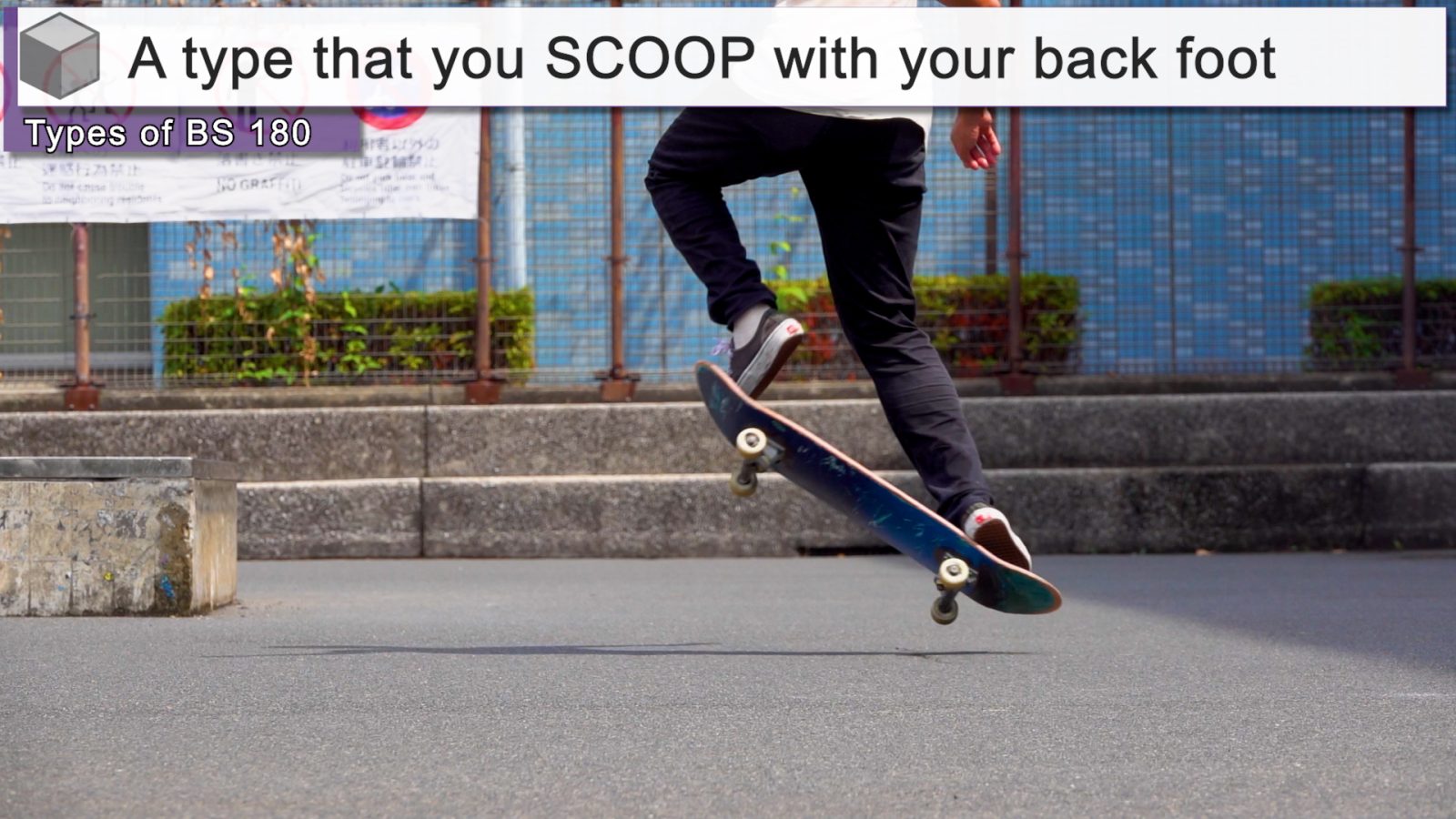
Prerequisite #1
Conservation of Angular Momentum
Question. Can you jump straight up and start spinning mid-air? Probably not. This is because the law of conservation of angular momentum applies to all objects, including the human body.
For those who are not good at physics like me, simply put, the amount of energy an object has in the air is constant, and it cannot increase its energy on its own.
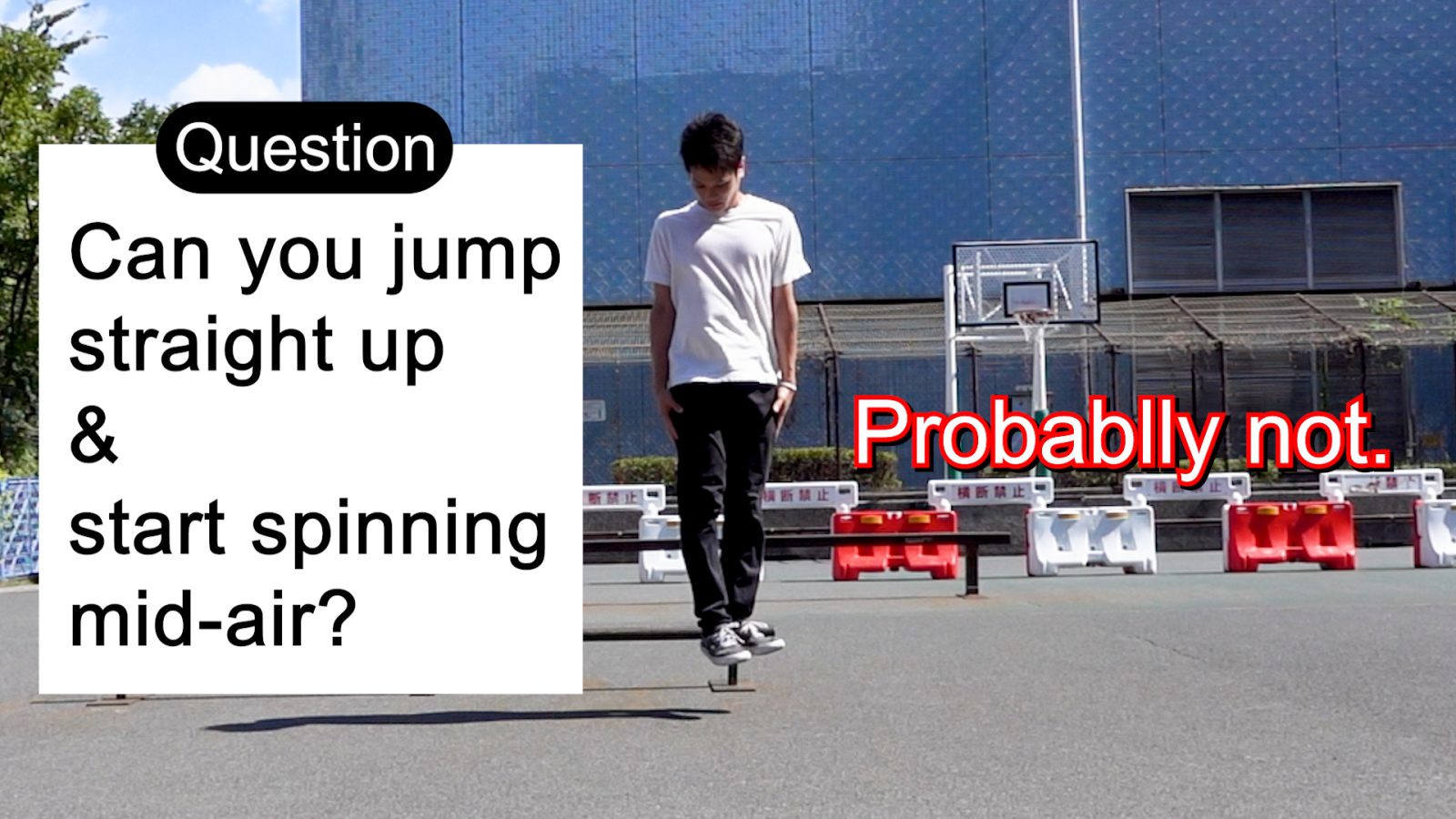
If you can't control your speed mid-air, what do you do?
Not being able to gain speed in the air translates to the only way to rotate is to gain initial speed by being repelled from the ground. It is understandable why some people try to increase the initial speed as much as possible by swinging their arms.
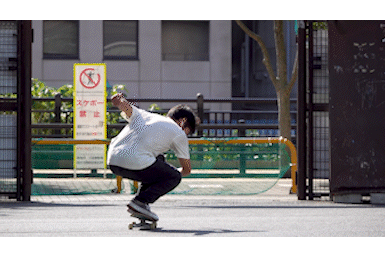
You can spin in the air if the total energy is constant
However, what if you try to move only your feet? This time, you should easily be able to rotate 180 degrees. At the same time, your upper body should rotate 180 degrees in the other direction.
In other words, an object can rotate in the air under the condition the total energy remains constant. The exact same thing happens in a BS 180; notice how my upper body spins clockwise at first but starts spinning counter-clockwise mid-air.
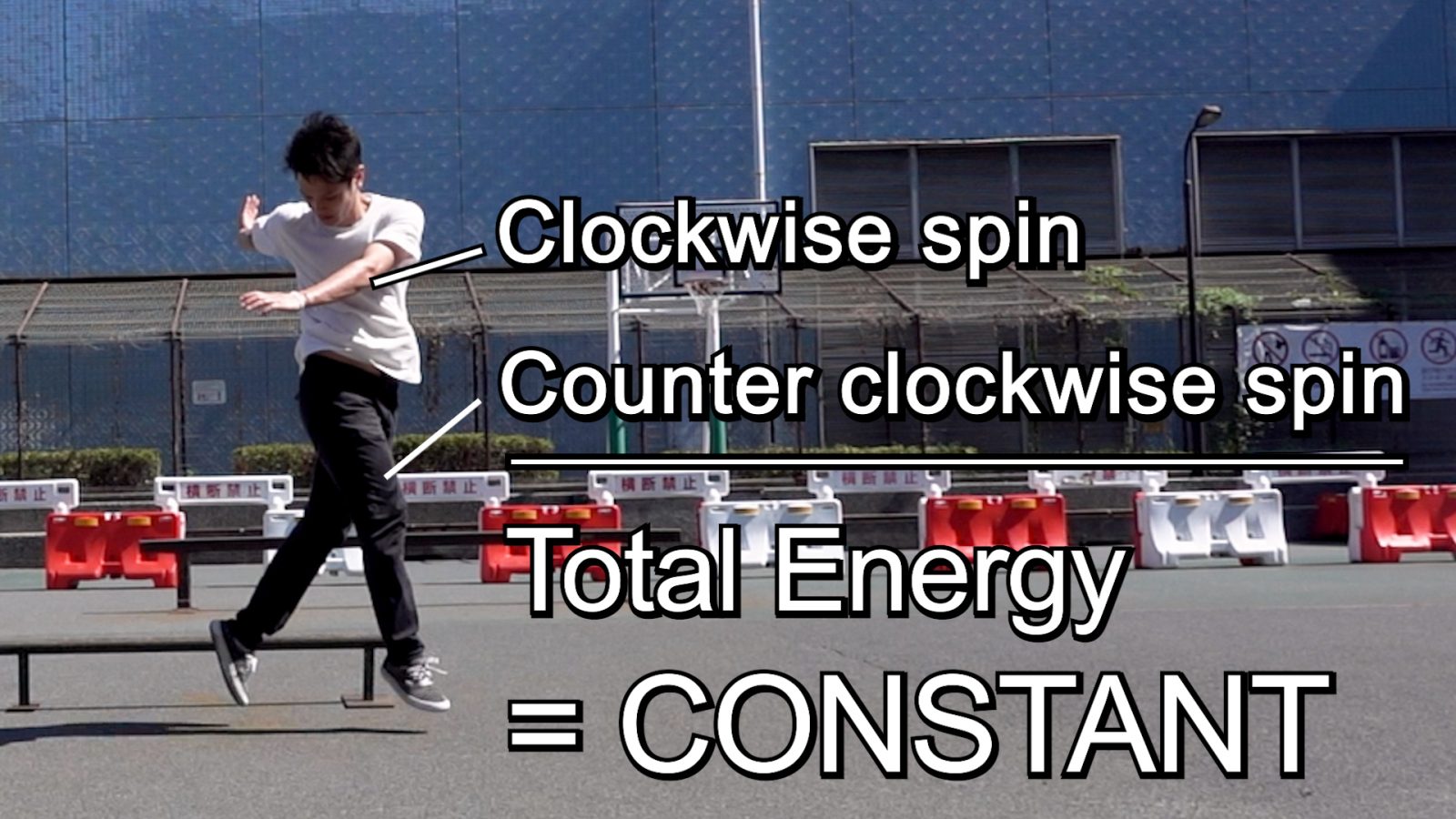
Spin arms in one direction and legs spin in the other direction
This is because my body is trying to rotate my legs, but it needs to generate a force that cancels such rotation to conserve the total amount of angular momentum. So, by spinning my arms in the other direction, I can spin my legs backside.

Prerequisite #2
Moment of Inertia
Please note when you rotate your legs with your hands folded, your arms should rotate in the opposite direction as much as your legs do, whereas your arms hardly move when you spread them out.
This is due to the difference in the moment of inertia between the upper and lower body. Simply put, it's a physics phenomenon that an object with a larger radius is less likely to spin.
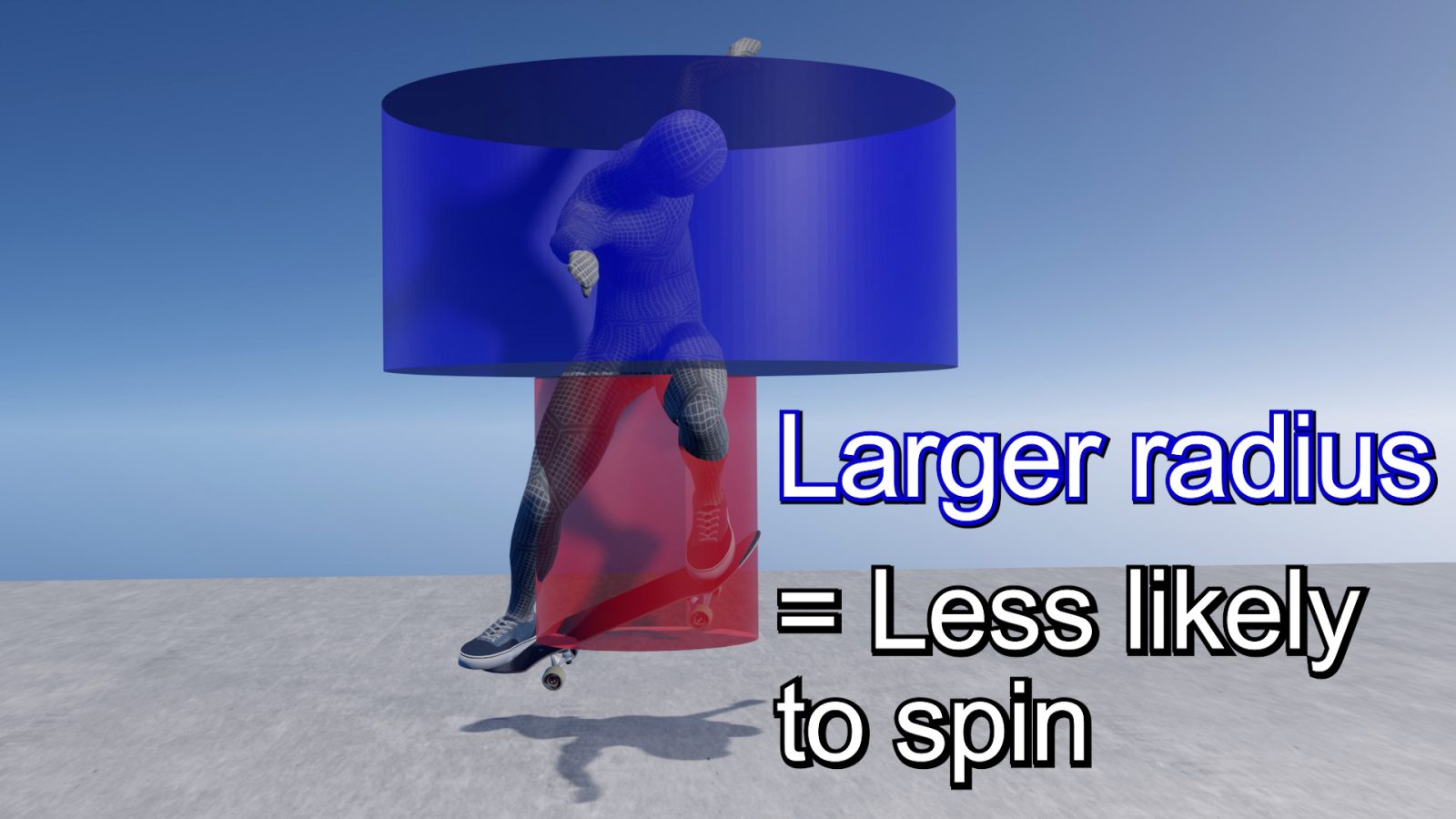
Bigger moment of inertia: less likely to spin
Imagine what happens when you extend your legs while spinning in a chair; you should slow down.
The same thing happens in a BS 180. When you extend your upper body, its moment of inertia increases. This means when you spin your legs in one direction, your upper body receives the same amount of force that tries to spin it in the other direction to offset the force that applies to your legs, but it is less AFFECTED by such a force.
This further allows you to stabilize your BS 180 by enabling you to rotate your legs without rotating your arms as much as your legs.
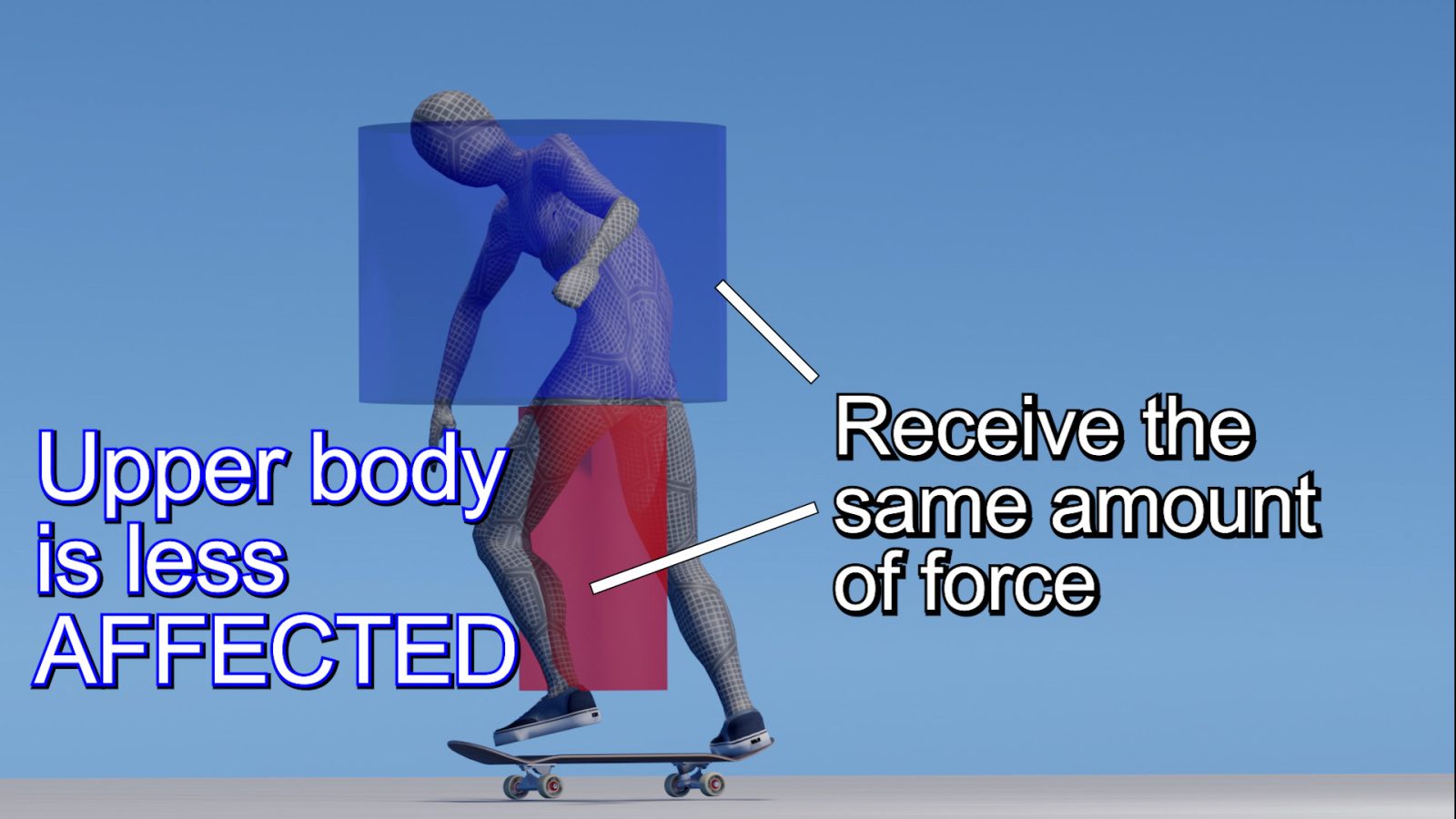
Execution
Foot placement
Put your back foot on the toe side of the tail, your front foot just behind the front bolts.
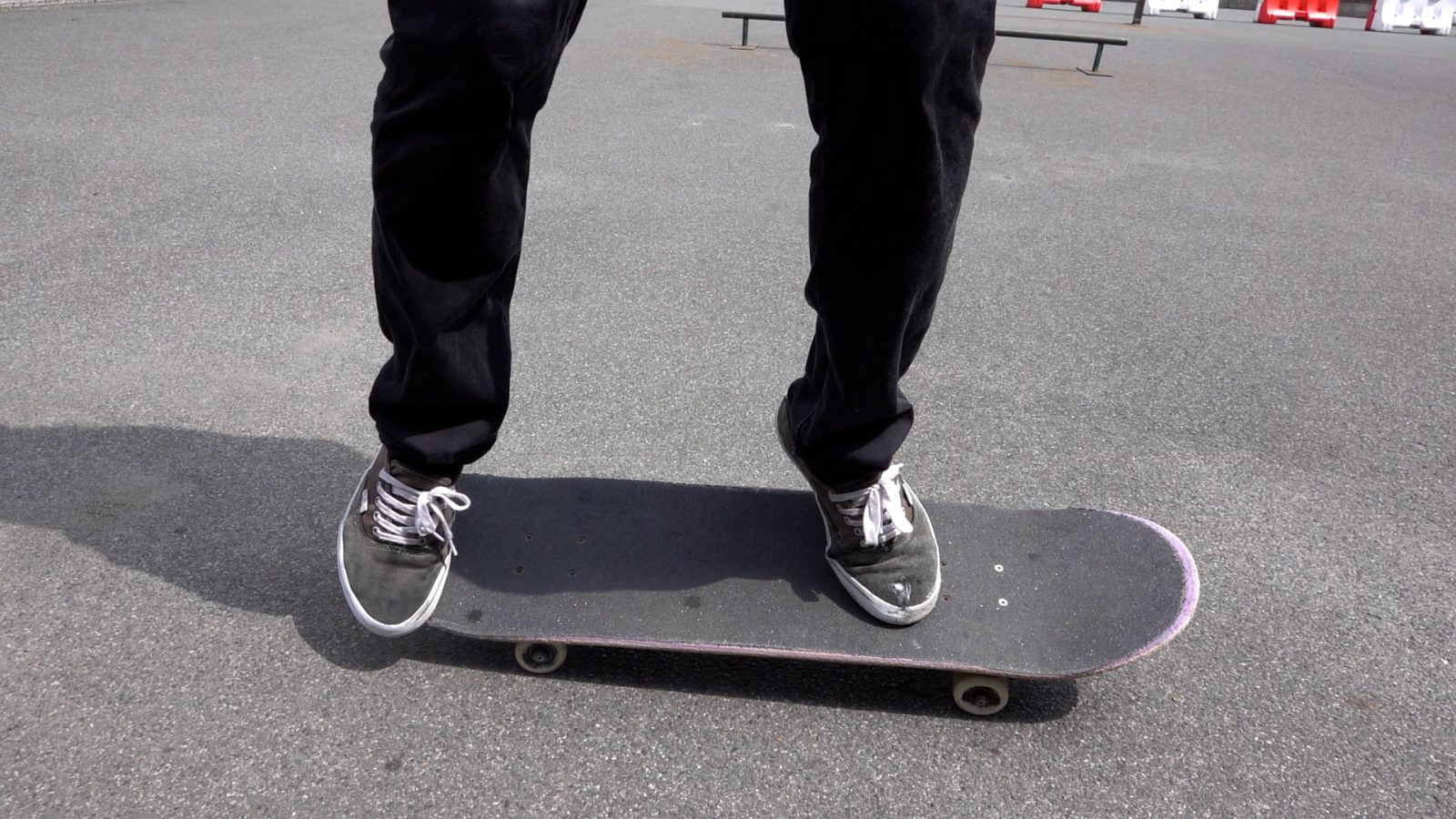
Wind up shoulders
While going straight, wind up your front arm toward your back. If the nose is at 12 o'clock, your leading arm should be at 9~11 o'clock.
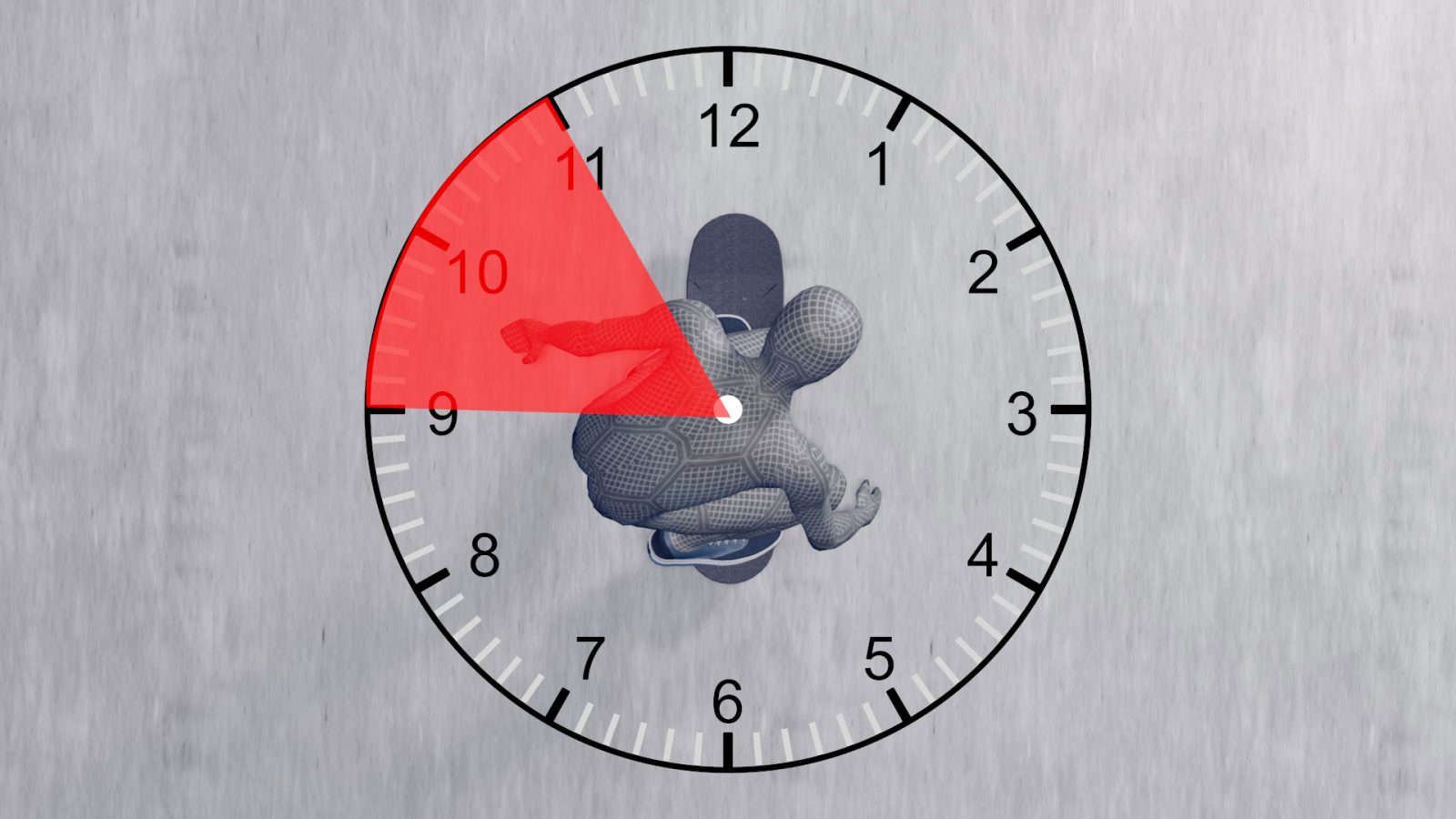
Difference in shoulder angle when you pop higher
Remember, this is when you scoop your backside 180. You might NOT wind up your shoulders so much when you pop harder.
You can see my front hand before my knee in the image. The higher you pop, the closer a BS180 becomes to an Ollie. Let's discuss it some other time.
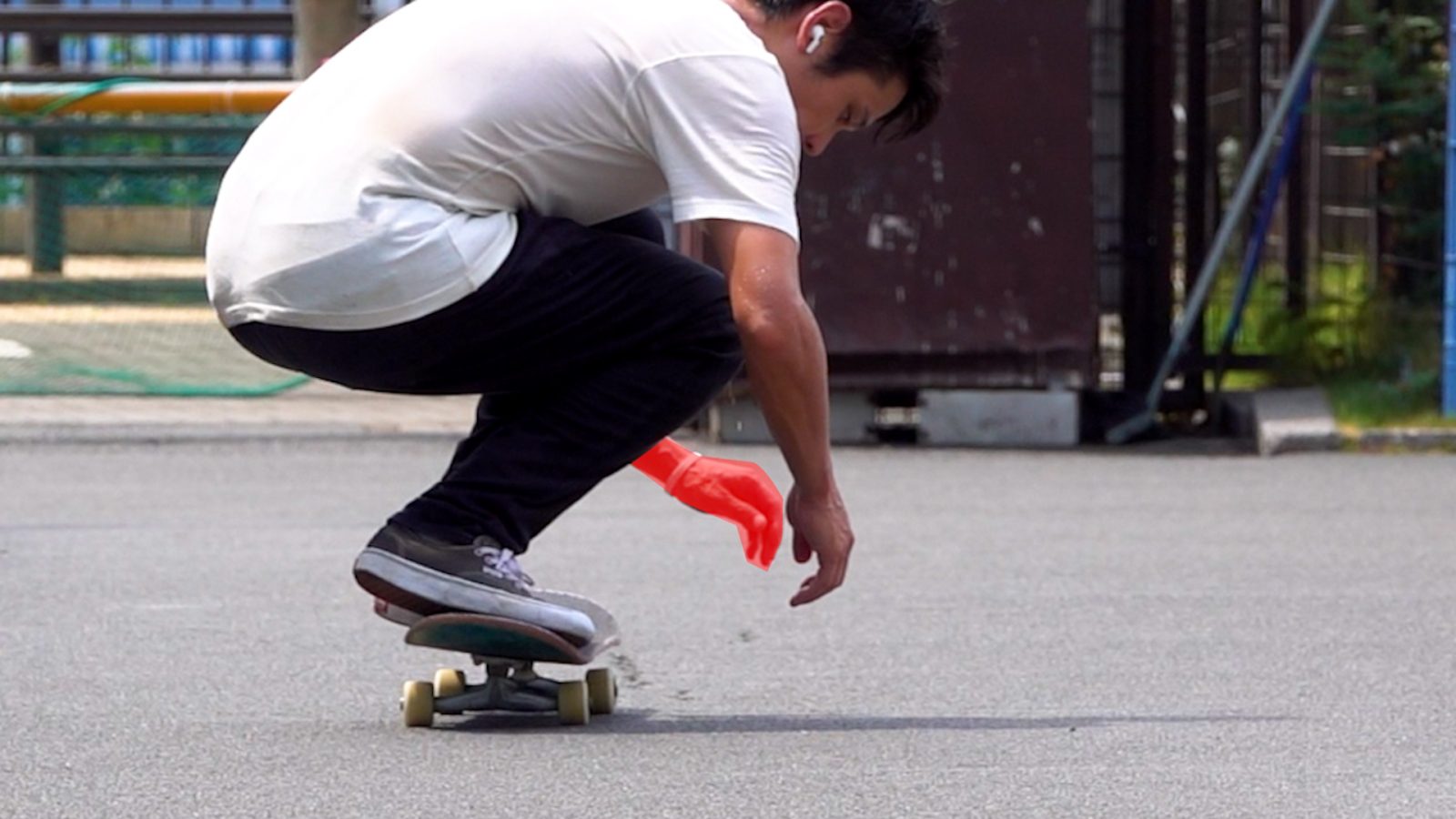
Weight distribution
Begin to shift your weight toward your toe side before lifting your weight.
In a BS 180 that you scoop, it is important to push your board's center of gravity forward with your back foot. Shifting your weight to the toe side helps you do this easier. We will get back to this topic in a minute.
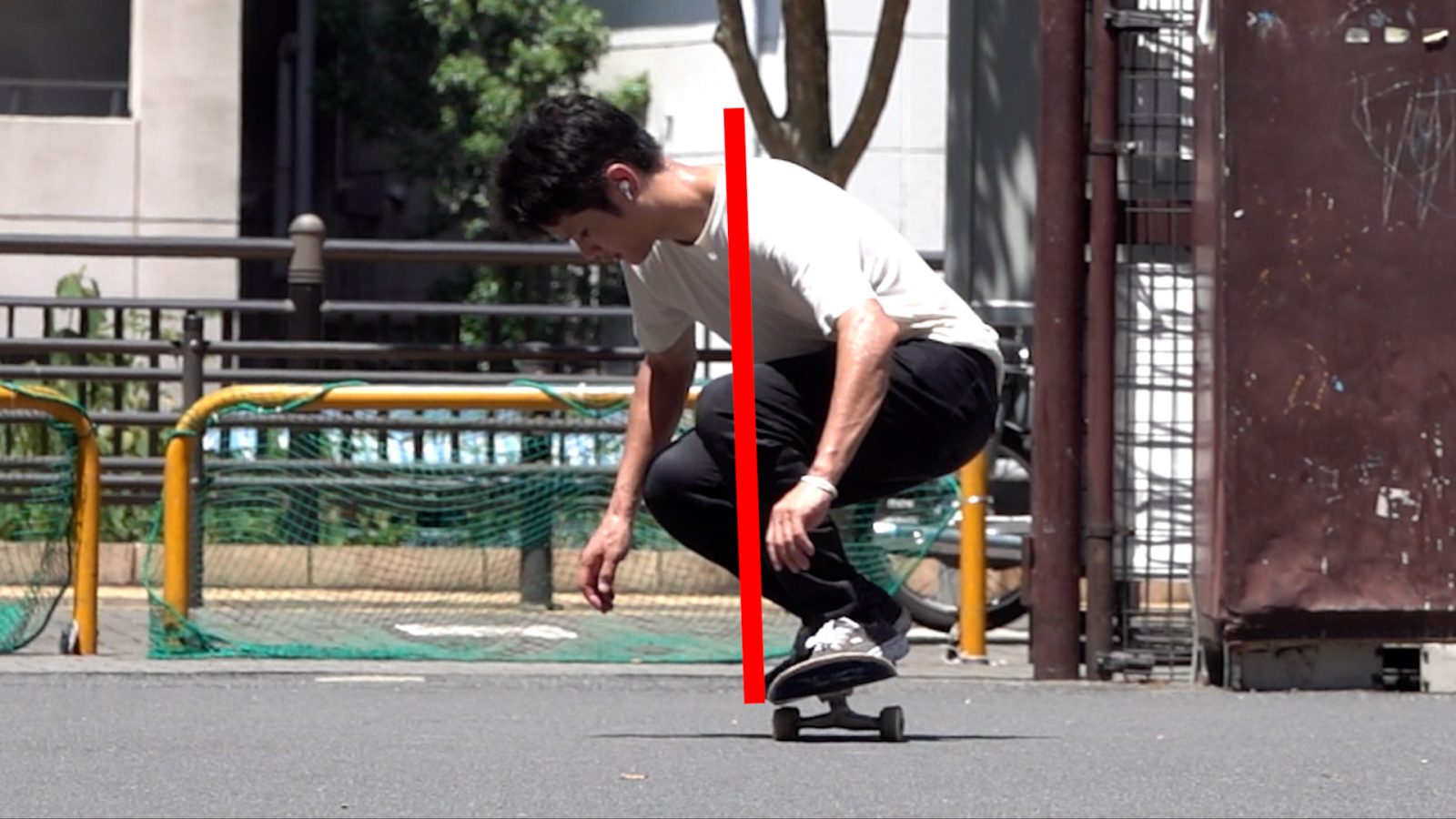
Throw front arm out
Next, lift your weight and throw your front arm at 2~3 o'clock. Use the force of your front arm swings out and shift your weight over your front foot.
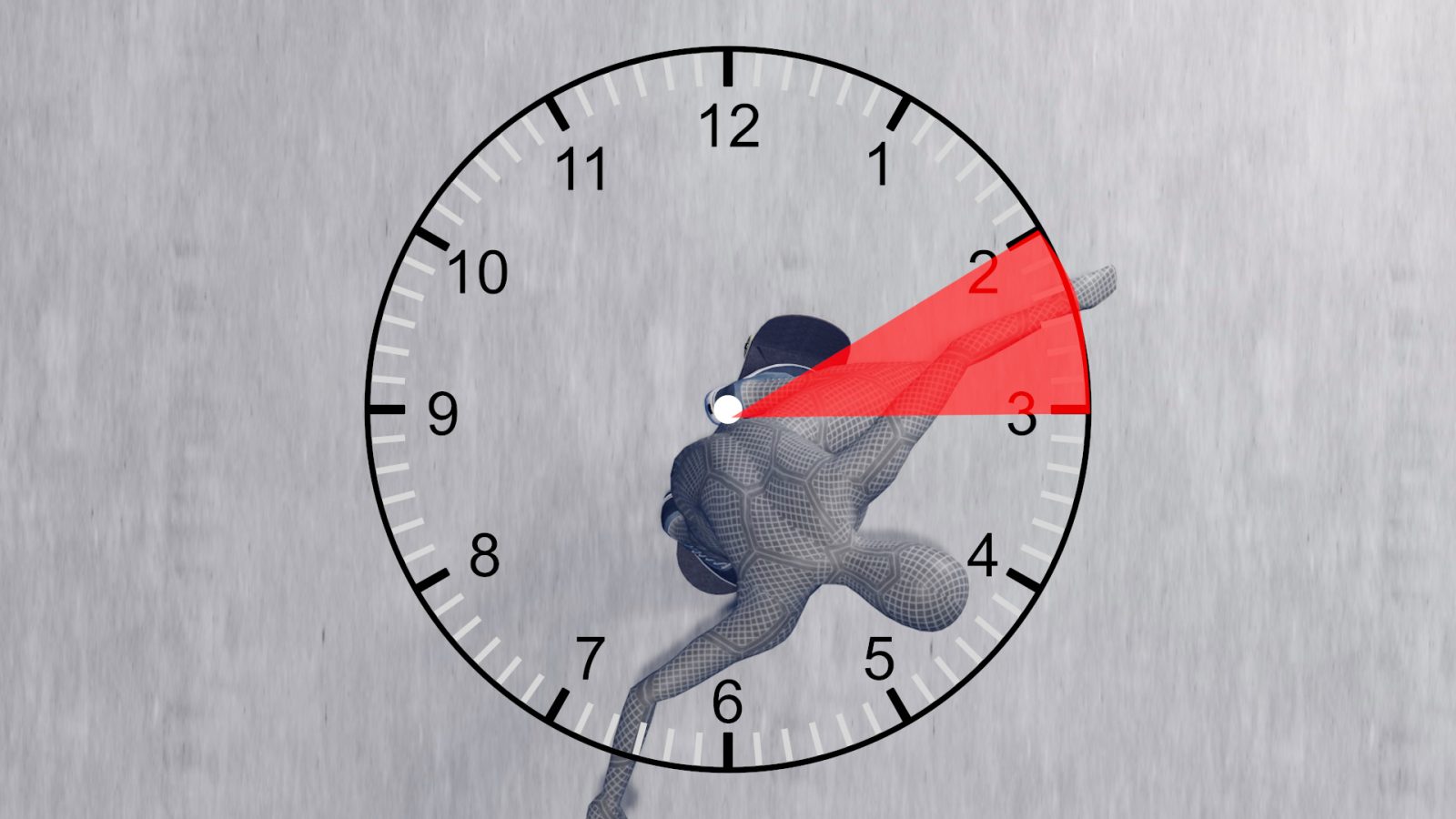
Why your feet come off your board
If you jump at too much of an angle toward your toes, your feet may come off your board. So avoid jumping too far and utilize your front arm's energy and let your body swing out with it.
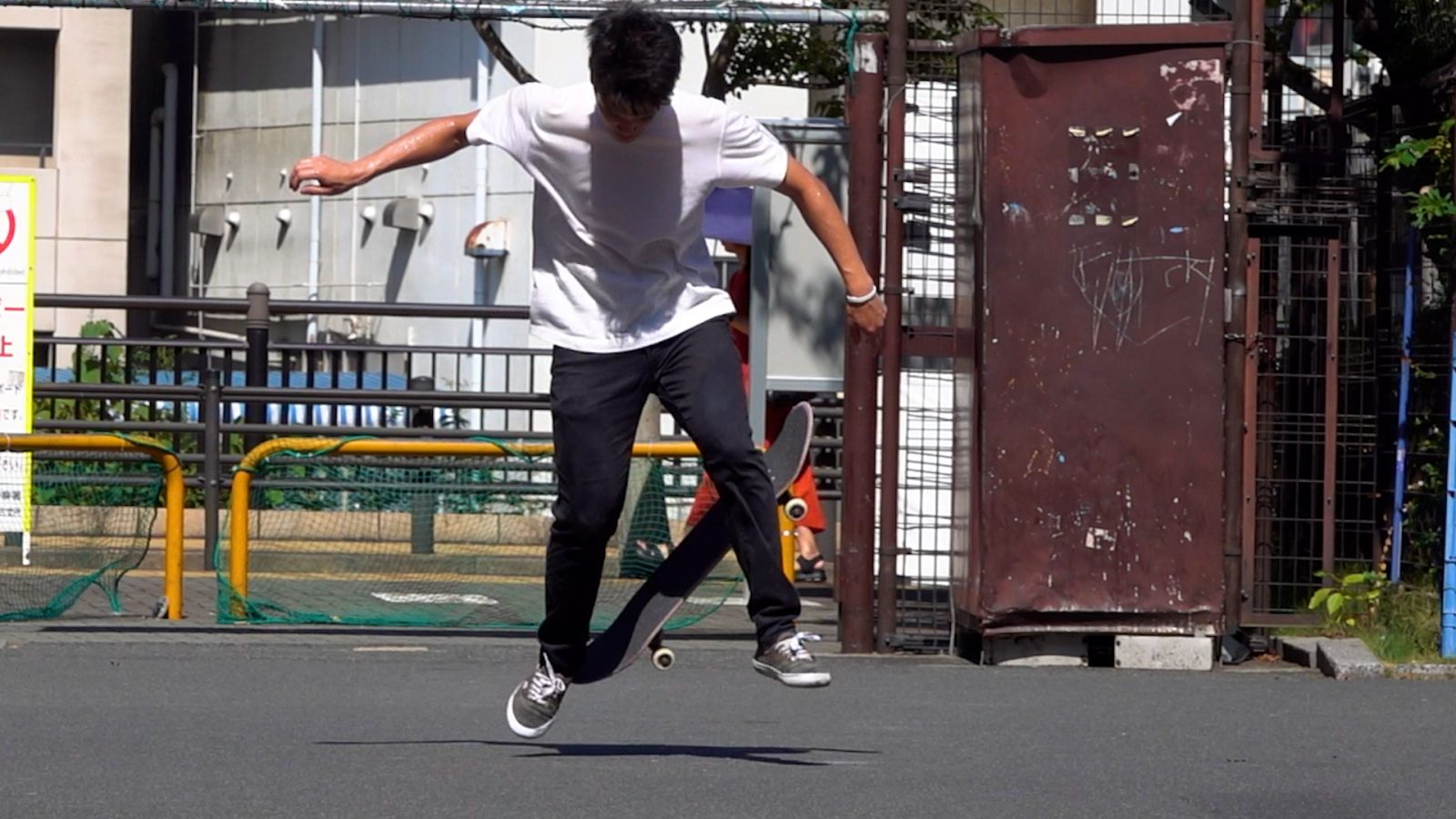
Extending arms = increasing moment of inertia
While extending your body, spread out your arms. This is to make the upper body's moment of inertia, or "how much an object is NOT likely to rotate," larger than that of the lower body.
Extending your arms allows you to rotate your feet more flexibly. Not to mention, it also helps you stay in the air longer as it lifts your body weight.

Pop the tail
Popping comes only after that. Since the tail is on the heelside relative to the center of gravity, you do not have to swing your back foot to spin your board. Just try to pop it straight down, and your back foot will naturally exert a horizontal force on the tail.
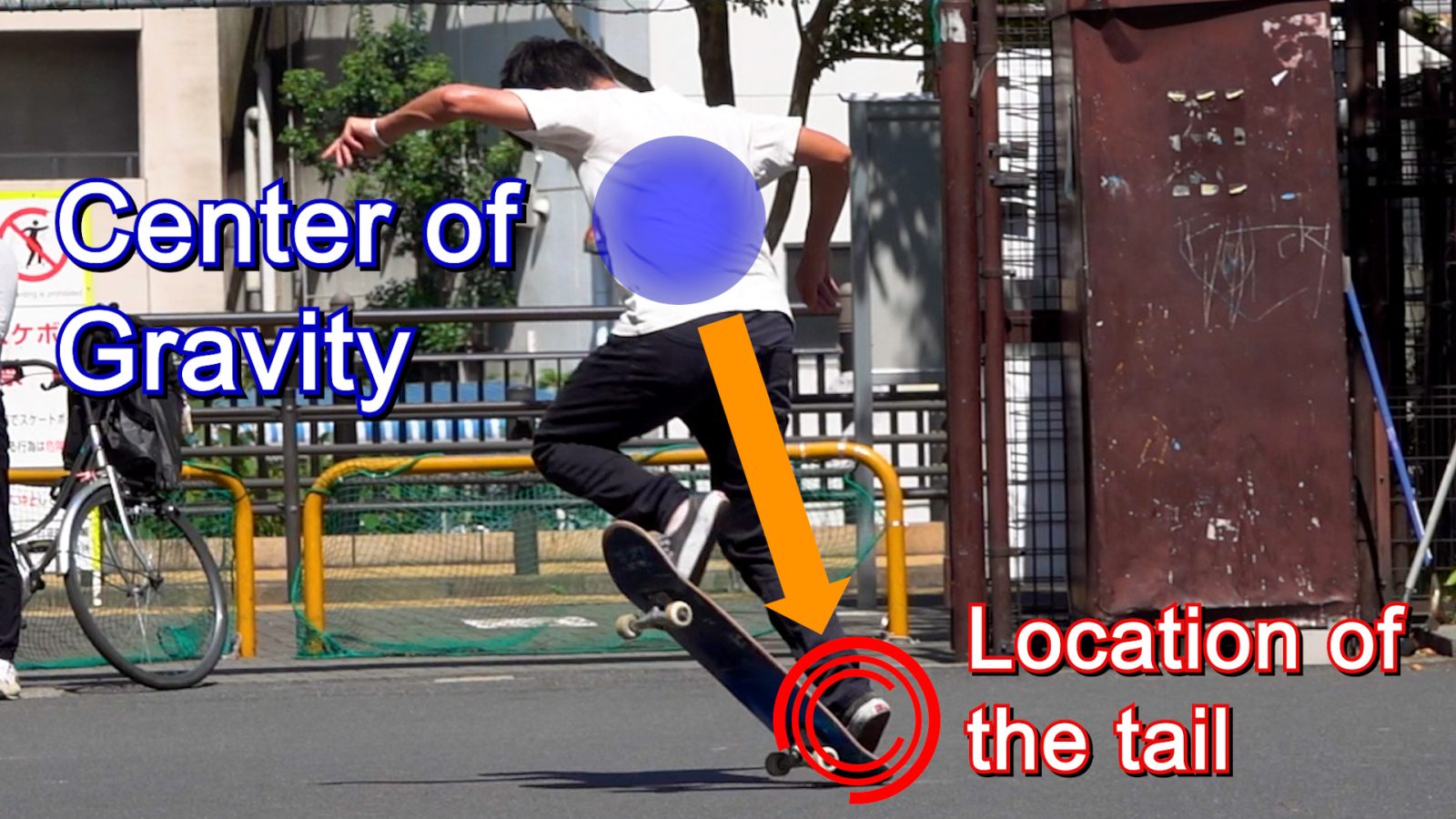
Use the friction on front foot and make a spinning axis
If you locate your weight above your front foot properly, the force that the nose tries to lift will collide with the force that the body weight presses the nose down, creating strong friction on the front foot.
Try to align this friction point and your body's center of gravity, and they will make a spinning axis. All that remains is to keep on pressurizing the tail in the direction you are going and the board spins backside.
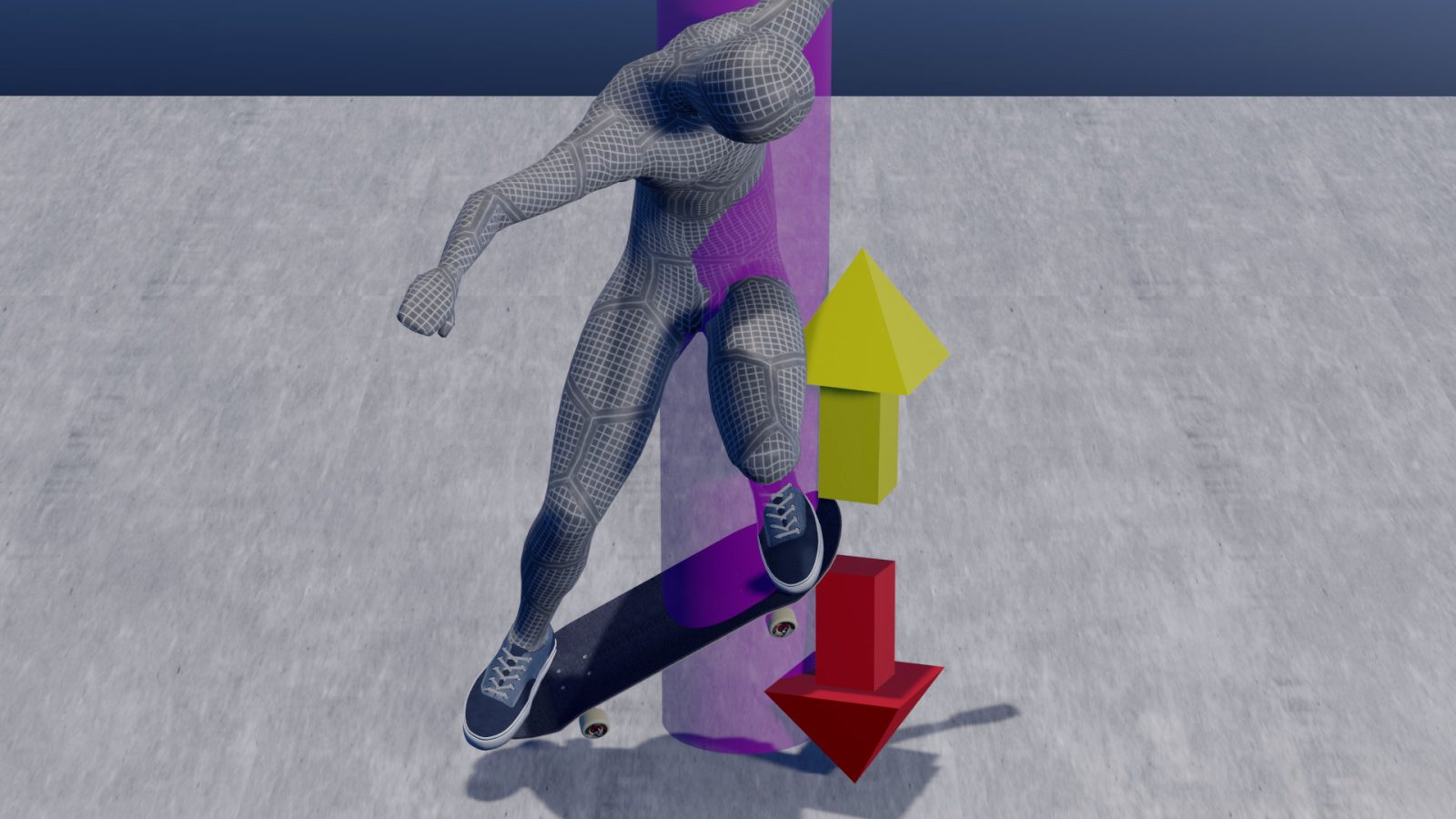
How to practice scooping the tail
If you have trouble turning the board, practice scraping the back foot forward while rolling. Imagine it as a baby BS 180 without a pop. If you are not used to the feeling of a BS spin, you don't even have to pop.
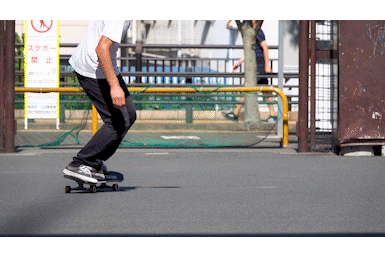
Scooping is a continuous motion
Lean your weight over the toe side, start closing your shoulders, and scrape your backfoot backside. Your weight on the toe side allows your feet to catch the ground effectively.
While scraping, send your board's center of gravity forward continuously. Remember, the scooping motion in this type of BS 180 does not finish instantly. It's continuous pressure on your back foot.
